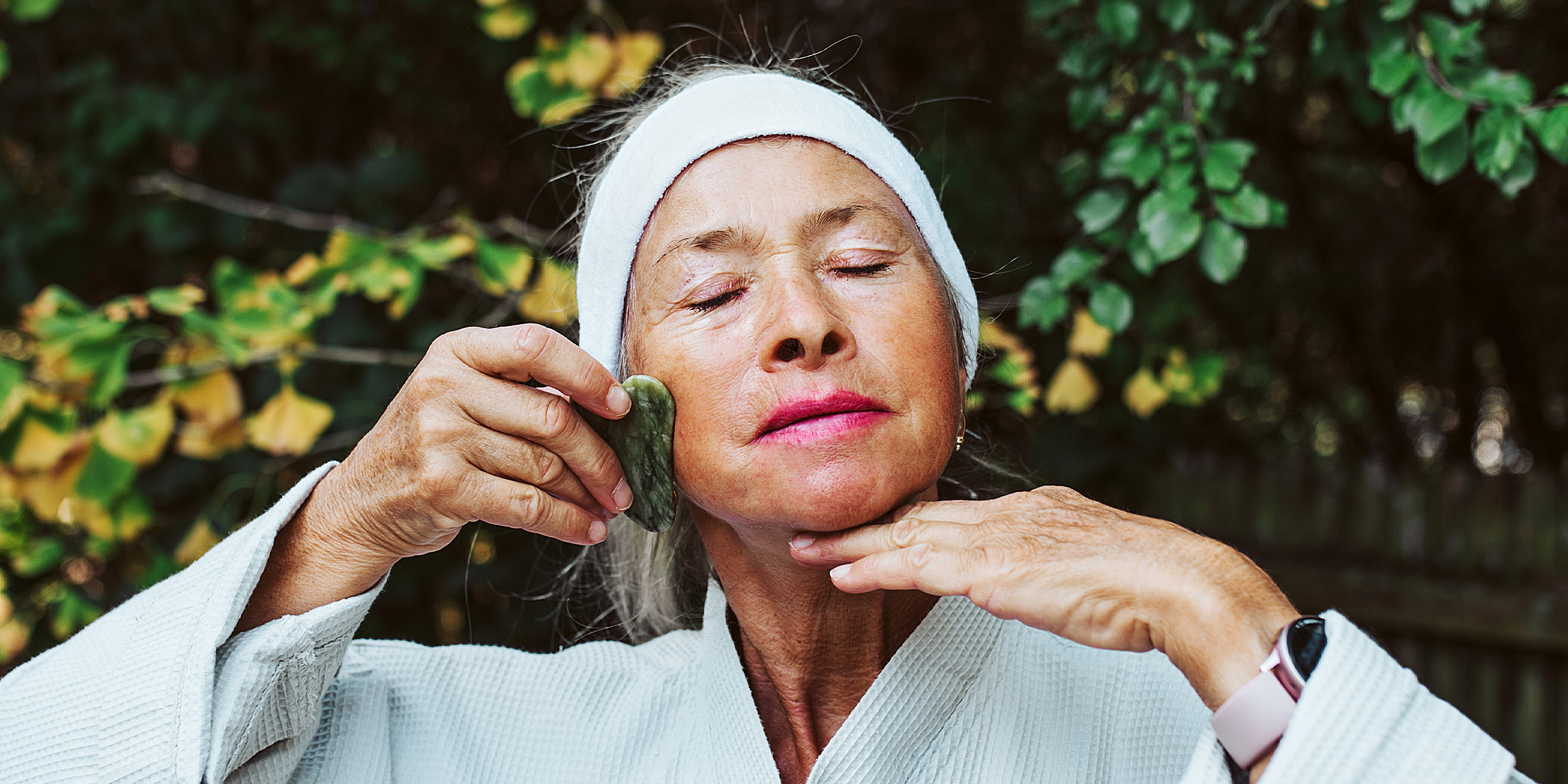
Gua Sha: The Chinese Medicine Technique You Should Know About
You've seen it all over social media — influencers gently scraping their faces using elegant facial massaging tools made of luxurious polished stone, engaging in a traditional Chinese medicine technique that is said to date back thousands of years.
Gua Sha, also known as scraping therapy, has gained popularity in the skincare corner of the internet over the last few years. While you may have mostly seen it performed on the face, this technique can be applied to other parts of the body and offers several potential benefits.
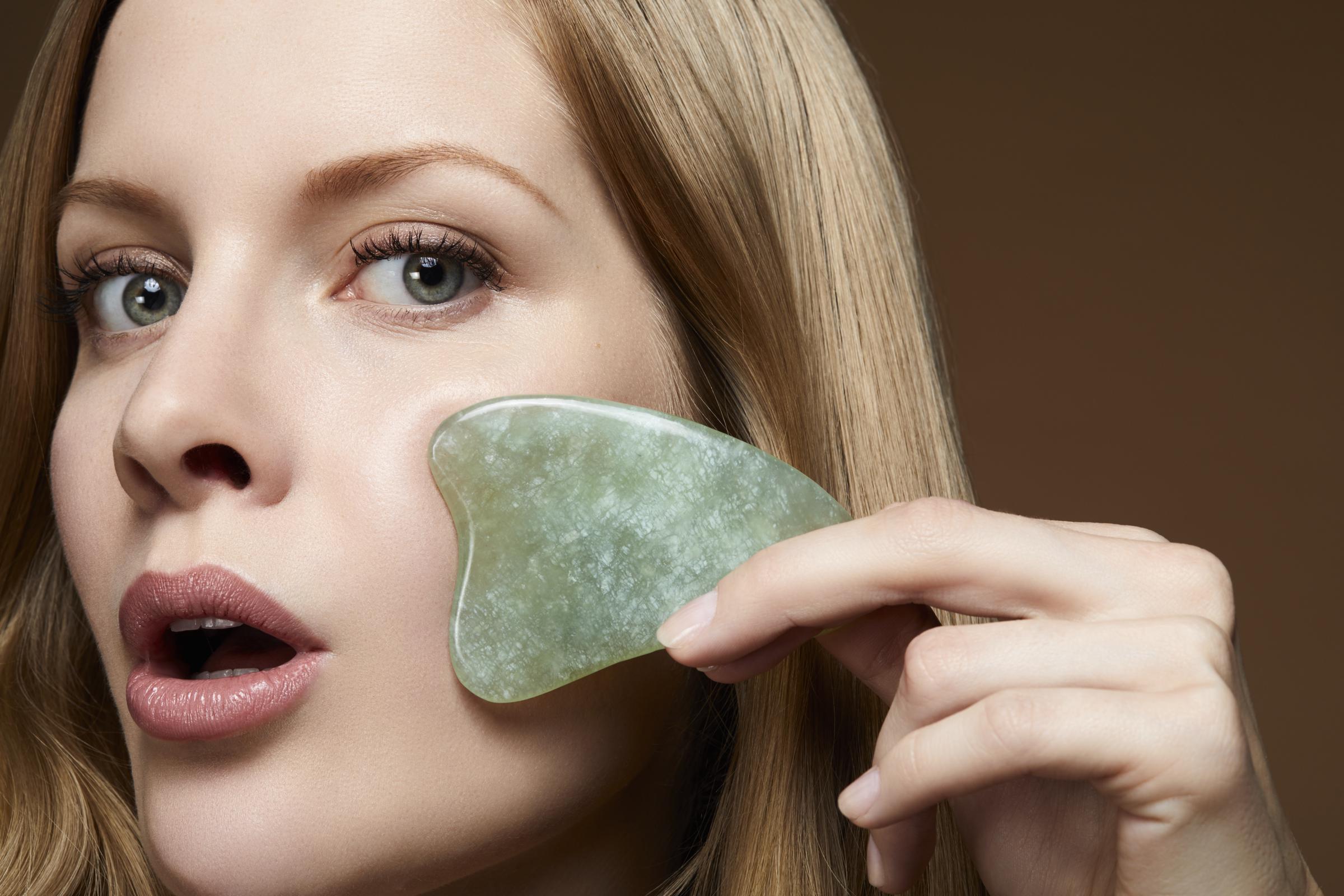
A woman massaging her face with a gua sha massage tool | Source: Getty Images
What Is Gua Sha?
Gua Sha is a traditional Chinese medicine technique that involves using a smooth-surfaced tool to improve circulation and relieve inflammation in the body. It is usually performed by an acupuncturist or a massage therapist, but it can also be done in the comfort of your home.
The practice is believed to release stagnant energy, known as qi (pronounced "chi"), which practitioners believe may be responsible for inflammation. Therefore, gua sha is said to balance the flow of qi in the body.
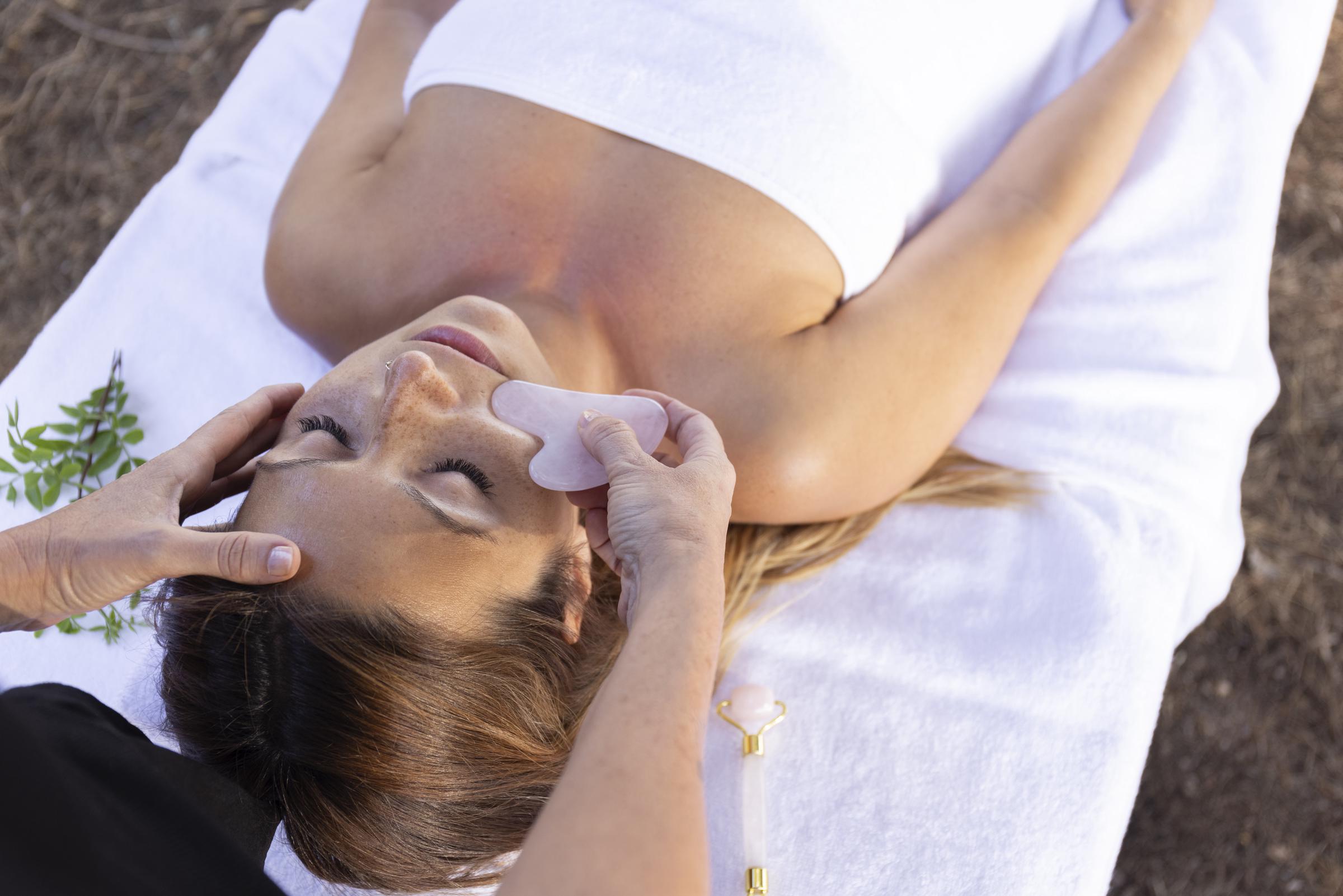
A masseuse giving facial massage to a customer lying on a table | Source: Getty Images
Though Western medicine does not follow those principles, modern research suggests that gua sha improves blood flow and promotes lymphatic drainage — a process through which the body maintains its fluid levels and removes cellular debris and harmful substances.
"Gua sha is a standard treatment modality that most acupuncturists use," licensed acupuncturist Tim Sobo, LAc, told Cleveland Clinic. "The term loosely translates to 'scraping, rubbing or pushing' — essentially, a tool-assisted type of massage."
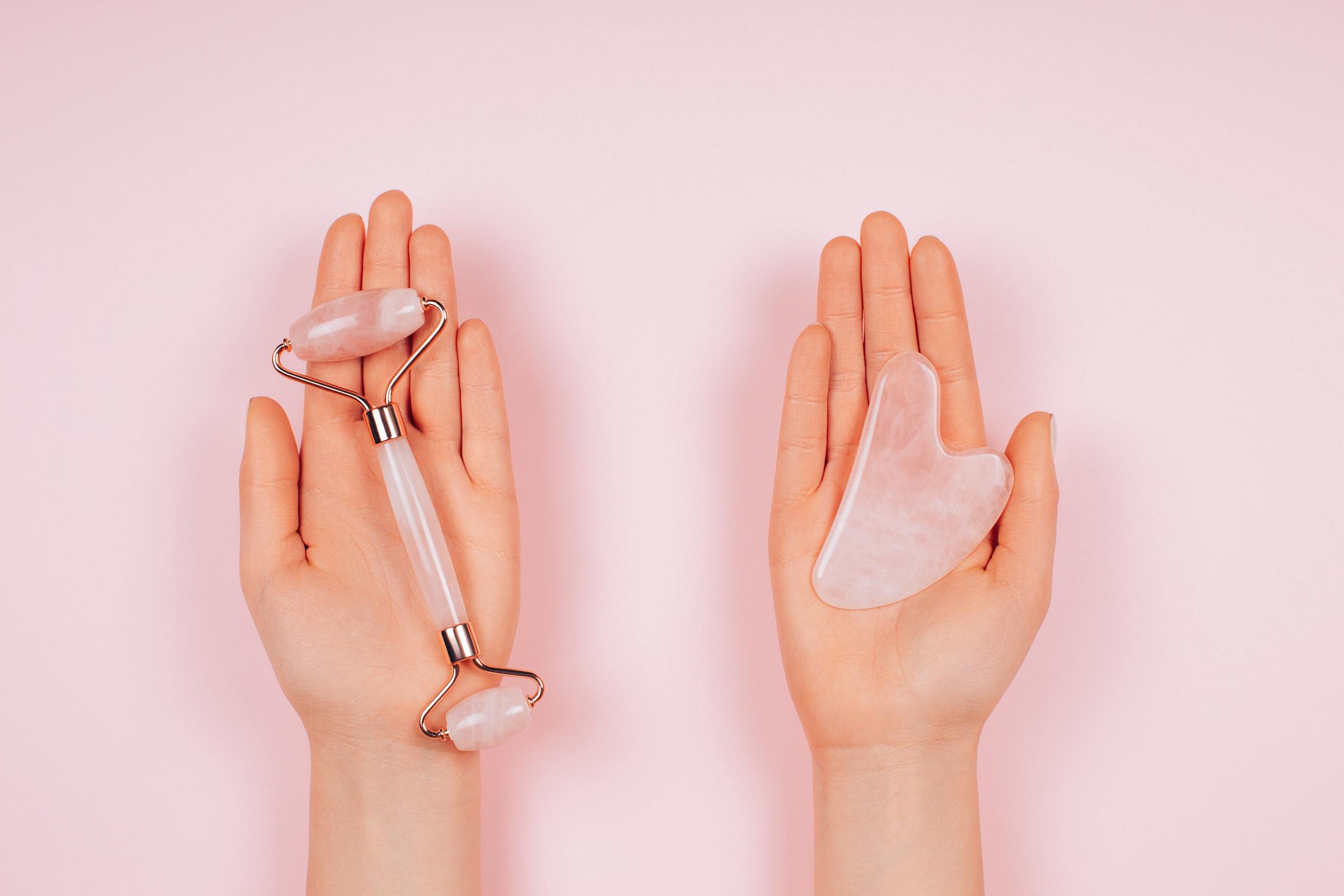
Gua sha stone tools | Source: Getty Images
Although scraping may sound painful, gua sha is a gentle technique. When done on your face, a practitioner will use light pressure. Then, when performed on other parts of the body with overly tense muscles, the intensity will increase depending on the knots your provider encounters.
"We identify areas of tense tissue, work on them gently and gradually build up the intensity to promote circulation to help break up those areas," Sobo explained.
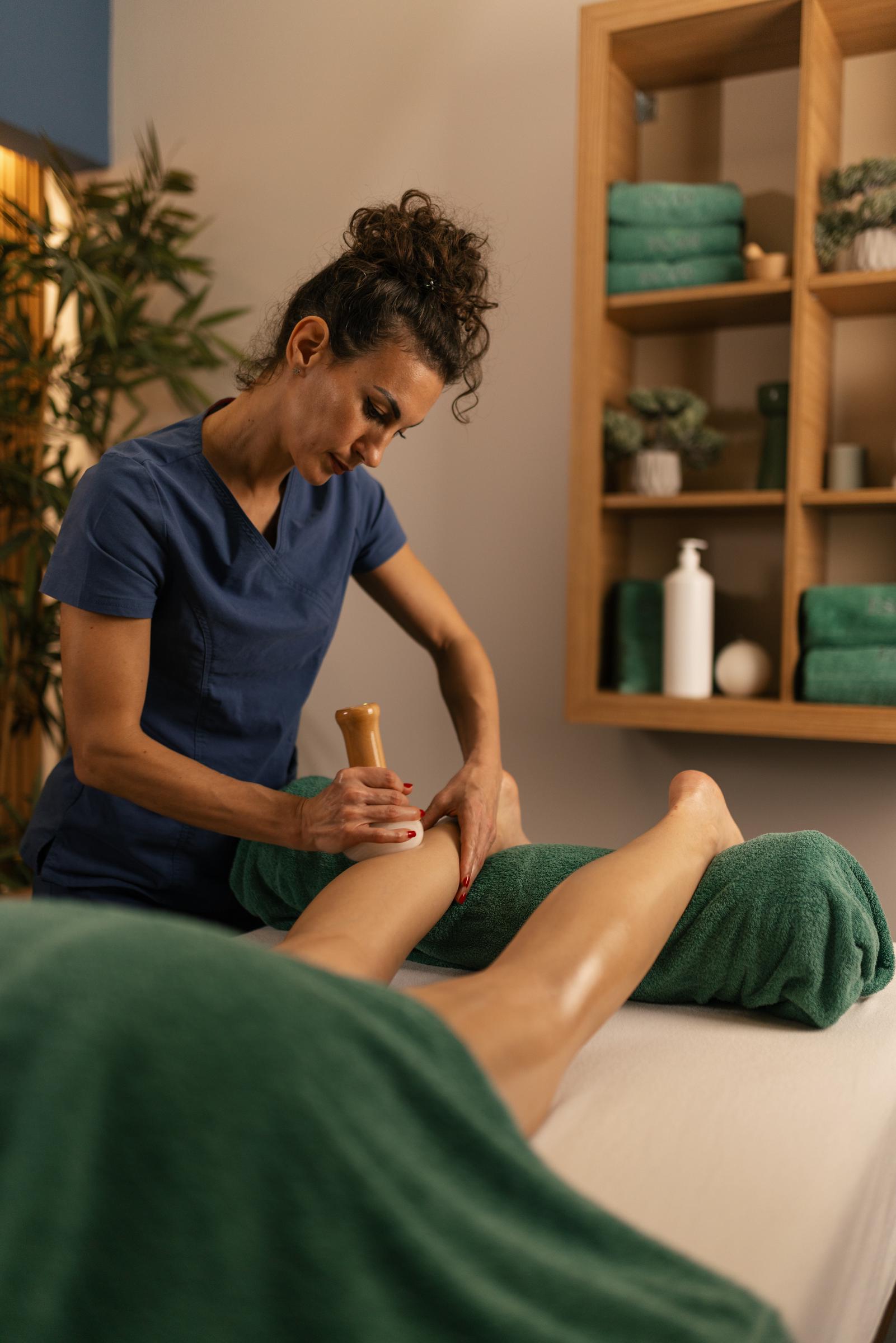
A woman administering a gua sha massage on a client's legs | Source: Getty Images
What Are the Benefits of Gua Sha?
Although there's not enough research to definitively confirm the benefits of gua sha, experts continue to study the technique. In fact, a few published studies offer insight into its potential effects. These include:
- Increased blood flow: A 2007 study published in Science Direct shows that gua sha increases microcirculation in treated areas, improving blood flow in the body’s smallest blood vessels.
- Pain relief: Gua sha is commonly used for pain relief in East Asia, particularly for musculoskeletal problems such as tightness in the neck, back, shoulders, and legs. Although studies have yet to provide conclusive evidence, these benefits have not been ruled out either.
- Lymphatic drainage: Influencers have claimed that gua sha can reduce facial puffiness, though current research has not yet confirmed this. However, the gentle downward motion of the scraping may help stimulate lymphatic flow, helping you feel more relaxed and refreshed.
What to Consider Before Exploring Gua Sha
Gua sha is generally considered safe, but if done improperly, there are some risks and side effects you should be aware of. For example, if you or your provider use excessive pressure during the procedure, you could experience muscle soreness, bruising, or skin discoloration.
It’s also worth noting that gua sha may not be suitable if you have one or more of the following:
- Diabetes
- Circulation problems
- A skin condition like eczema or psoriasis
- Are pregnant
- Are taking blood thinners
- Are undergoing chemotherapy
Although scientific research on gua sha is limited, many people report experiencing the above-outlined benefits. Before embarking on this Chinese medicine technique, it is highly advised that you consult a healthcare professional to rule out whether or not it is safe for you.
